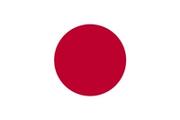CANCEL

STS-95 (Discovery)
Launch Date
October 29, 1998
Craft
Space Shuttle
Status
Past
Crew
7

STS-95 (Discovery)
Launch Date
October 29, 1998
Craft
Space Shuttle
Status
Past
Crew
7
Overview
NASA’s STS-95 mission launched aboard the Space Shuttle Discovery on October 29th, 1998, from Kennedy Space Center in Florida. The crew included Commander Curtis L. Brown Jr., Pilot Steven W. Lindsey, Mission Specialists Scott E. Parazynski, Stephen K. Robinson, and Pedro Duque, Payload Specialist Chiaki Mukai, and Payload Specialist John H. Glenn Jr., a U.S. senator and former Mercury astronaut returning to space. STS-95’s main objectives included scientific experiments on aging, life sciences, and materials science, while deploying and operating the Spartan solar-observing satellite. Notably, the mission studied the effects of space on the aging process, with John Glenn serving as the key participant. Discovery successfully landed back at Kennedy Space Center on November 7th, 1998, completing the mission.
Crafts

Space Shuttle
The first reusable launch and landing spacecraft, the Space Shuttle began a new chapter of human space exploration. It launched like a rocket but landed on a runway like a plane. Shuttle crews deployed dozens of commercial satellites and two interplanetary probes to Venus and Jupiter. The Shuttle served as a mini space station and hosted hundreds of biomedical, psychological, physiological, materials science, and physics experiments that have directly benefited life on Earth. The five flight-worthy Shuttles -- Columbia, Challenger, Discovery, Atlantis, and Endeavour -- flew 135 missions over 30 years. The Shuttles helped construct the Russian Mir space station and brought nearly 80% of the International Space Station to orbit. Shuttles also deployed and serviced the Hubble Space Telescope.
Launch Crew

330
Scott E. Parazynski


5
MISSIONS
57.6
DAYS IN SPACE
7
SPACEWALKS
2
DAYS SPACEWALKING





323
Chiaki Mukai



2
MISSIONS
23.7
DAYS IN SPACE
-
SPACEWALKS
-
DAYS SPACEWALKING



289
Curtis L. Brown Jr.


6
MISSIONS
57.7
DAYS IN SPACE
-
SPACEWALKS
-
DAYS SPACEWALKING




5
John H. Glenn Jr.


2
MISSIONS
10
DAYS IN SPACE
-
SPACEWALKS
-
DAYS SPACEWALKING



372
Stephen K. Robinson


4
MISSIONS
48.4
DAYS IN SPACE
3
SPACEWALKS
0.8
DAYS SPACEWALKING




375
Steven W. Lindsey


5
MISSIONS
62.9
DAYS IN SPACE
-
SPACEWALKS
-
DAYS SPACEWALKING




393
Pedro Duque


2
MISSIONS
18.8
DAYS IN SPACE
-
SPACEWALKS
-
DAYS SPACEWALKING



Non-human Crew






